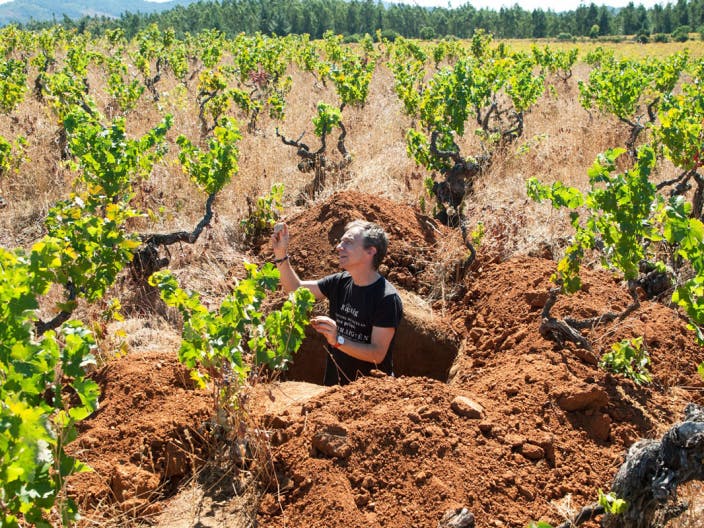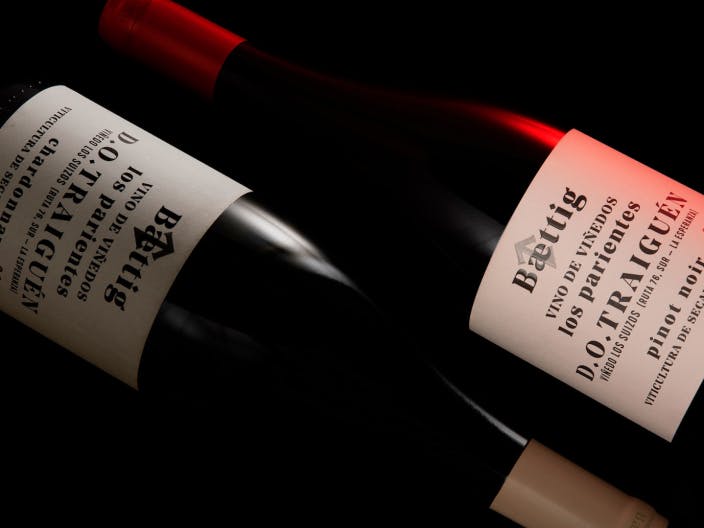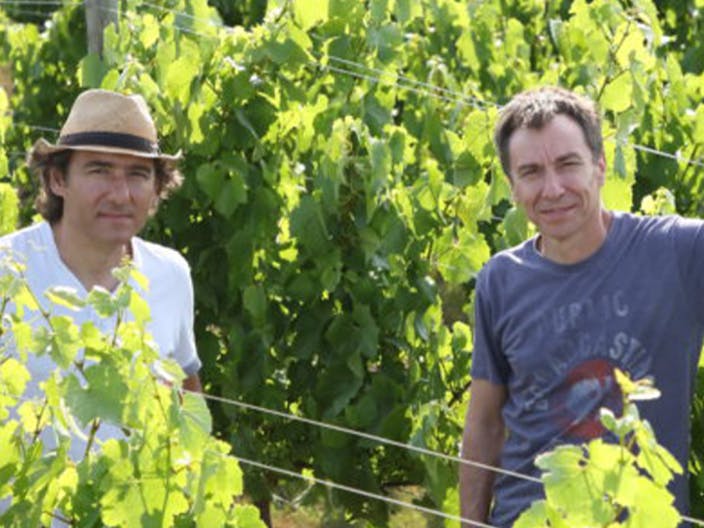More about Baettig
Baettig is a partnership between Francisco Baettig (the winemaker behind the wines of Errázuriz, Seña and Chadwick) and Carlos de Carlos (previously Commercial Director at Errázuriz and now also works for Paul Hobbs).
In 2010, they started looking for the right site, working with expert geologist Françoise Vannier-Petit and finally purchasing 22 hectares in Traiguén, in the Malleco province, in 2012. The region remains little known, but here in the cool south of Chile (at the same latitude as Patagonia), they felt that Pinot Noir and Chardonnay would ripen slowly, retaining acidity and accruing sugar slowly to allow for wines with freshness and moderate alcohols, as well as having sufficient rainfall to allow them to dry farm once the vines were established.
They planted just over 15 hectares of various Burgundy clones of Chardonnay (6.4 hectares) and Pinot Noir (nine hectares) in 2013, with one experimental plot even on its own roots. They made their first tiny vintage in 2016, but their first commercial vintage was 2018, released in 2020.
Traiguén has poor volcanic soils and lower levels of sunshine than the main regions in central Chile, tempering the climate and lengthening the growing season, helping build complexity in the grapes. Their vineyard, Viñedo los Suizos, is close to the Traiguén River, which offers protection to spring frosts, which remain a major threat to the region.
From the 2021 vintage, they introduced Cabernet Sauvignon from the Maule. Here they are able to work with old vines – some over 120 years in age – that have been grafted over from País to Cabernet Sauvignon, producing tiny yields of concentrated fruit. Baettig chose the Maule because of its wealth of old vines and granite soils, but also the distinct style of the fruit grown in areas near the coastal range, with bright acidity, good colour, aromatics and tannins that are, in his view, almost Saint-Estèphe in style.
At first they sourced fruit from a selection of growers, but as of 2023 have purchased five hectares of old vines in Coronel, in the Cauquenes appellation, which is also the source for their Selección de Parcelas cuvée. With the area’s naturally generous rainfall, they are also able to dry-farm here.
The project focuses on two tiers of wines: their Vino de Viñedo range, which are their entry-level offering and a village equivalent; and their Selección de Parcelas which is a step up, their “Premier Cru” made with a selection of individual parcels of the best fruit (available in much lower volumes).
The Pinot and Chardonnay Vino de Viñedo are known as Los Parientes, while the Selección de Parcelas are labelled as Los Primos. The Cabernet Sauvignon Vino de Viñedo is Los Compadres, while the Selección de Parcelas is Los Padrinos.
The fruit is all hand harvested and fermented using native yeasts. The Chardonnays are all 100% barrel-fermented in larger 400-litre oak barrels. The amount of new oak varies but typically the Los Parientes uses just 10%, while it is closer to 40% for the Los Primos. The wine is aged in barrel for 12-16 months depending on the cuvée.
A portion of the Pinot Noir is whole-bunch fermented (typically 15-30%). Once fermented the wine is matured in French oak barrels between 15-18 months (20% new). Minimal sulphites are used throughout production due to the moderate alcohol levels and naturally low pH levels in the wines, making them less susceptible to oxidation.
For the Cabernet Sauvignon, the fruit is all de-stemmed and sorted with fermentation temperatures low at around 24-28˚C and total maceration times of maximum 20 days, given the natural concentration and structure of the fruit. The Los Compadres is aged for 10 months in French oak (20% new), with the Los Padrinos aged for 15 months in 65% new oak (including around a third in larger 300-litre barrels).


